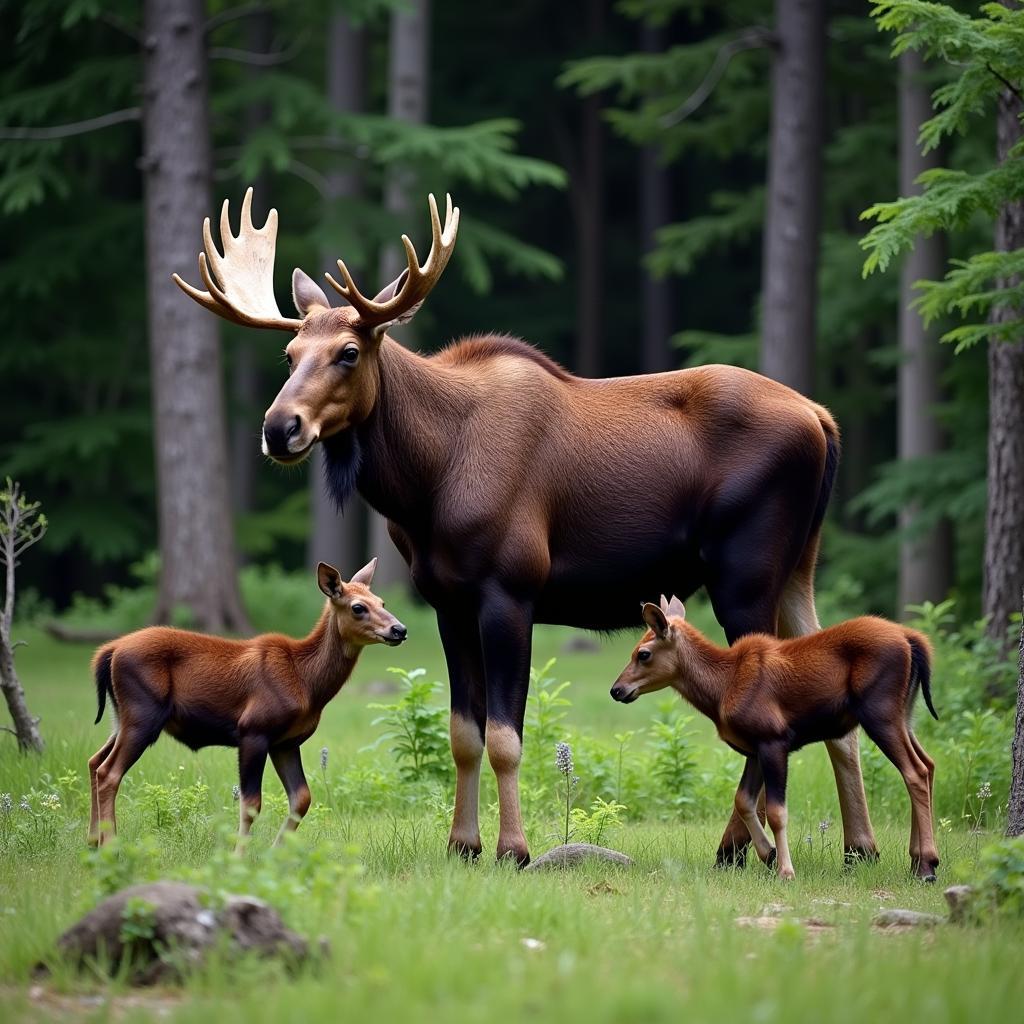Moose do indeed live in Colorado! These majestic creatures, known for their impressive size and distinctive antlers, have found a home in the diverse landscapes of the Centennial State. Their presence adds to Colorado’s rich biodiversity, attracting wildlife enthusiasts and nature lovers alike.
Discovering Colorado’s Moose Population
Colorado’s moose population is a relatively recent success story. While historically present, their numbers dwindled due to habitat loss and other factors. However, thanks to reintroduction efforts beginning in the late 1970s, moose have made a remarkable comeback. Today, several thriving moose populations can be found across the state. They are primarily located in the mountainous regions of northern, central, and northwestern Colorado. Their preferred habitat consists of willow-rich riparian areas, forests near lakes and wetlands, and high-elevation valleys. These areas provide them with ample food sources, such as aquatic plants, willows, and aspen, and offer protection from predators.
Where to Find Moose in Colorado
Locating moose in Colorado requires patience and respect for their environment. While they are large animals, they can be elusive and blend surprisingly well into their surroundings. Some prime locations for moose viewing include State Forest State Park, North Park near Walden, and the areas surrounding Steamboat Springs. Remember to maintain a safe distance and observe these magnificent animals responsibly. You can find more information on where to observe wildlife in the state through resources like what wildlife is in colorado.
 Colorado Moose Habitat – Lush Green Forest with a Lake
Colorado Moose Habitat – Lush Green Forest with a Lake
Understanding Moose Behavior and Ecology
Moose are herbivores, their diet consisting primarily of vegetation. They are known for their impressive swimming abilities, often venturing into lakes and rivers to forage for aquatic plants. Bull moose, the males, are easily recognizable by their large, palmate antlers. These antlers are shed annually and regrow in the spring, reaching their full size by the fall mating season. Cows, the females, are generally smaller and lack antlers. Similar to deer whose antler color can vary, moose antler size and shape can differ based on age and health. For further insights into deer antlers, check out this resource: what color are deer antlers.
Are Moose Dangerous?
While generally peaceful, moose can be dangerous if they feel threatened, especially during the mating season or when protecting their young. It’s crucial to maintain a respectful distance and avoid any actions that could provoke them. Never approach or attempt to feed a moose.
 Mother Moose with Calves in a Colorado Forest
Mother Moose with Calves in a Colorado Forest
The Importance of Moose Conservation
The successful reintroduction and continued management of moose populations in Colorado are testaments to the importance of conservation efforts. By protecting their habitat and promoting responsible wildlife viewing practices, we can ensure that these majestic creatures continue to thrive in the Centennial State. You might find similarities with other Colorado wildlife by exploring this link: what animals live in colorado.
“Protecting moose habitat is crucial not only for the survival of these magnificent animals but also for maintaining the overall health and biodiversity of Colorado’s ecosystems,” states Dr. Emily Carter, a wildlife biologist specializing in ungulate populations.
Comparing Moose with Other Colorado Wildlife
Colorado is home to a diverse range of wildlife, including elk, deer, and black bears. While moose share some similarities with these other species, they are unique in their size, behavior, and habitat preferences. For those interested in comparing moose to other Colorado residents, this guide might be helpful: where to see moose in colorado. It’s essential to be aware of the differences between these species to ensure safe and responsible wildlife viewing. While many wonder about the presence of grizzly bears, it’s important to know that they are not found in Colorado. You can learn more about this here: are there grizzly bears in colorado.
“Moose are truly remarkable creatures, adapting to the challenging environments of Colorado’s mountains,” says Dr. John Reynolds, a leading expert in moose ecology. “Their presence enriches the state’s natural heritage and provides valuable opportunities for wildlife observation and research.”
In conclusion, moose do indeed live in Colorado, thriving in various regions across the state. Their presence is a testament to successful conservation efforts and contributes to the rich biodiversity of Colorado’s ecosystems. By respecting their habitat and observing them responsibly, we can ensure that these magnificent animals continue to grace the Colorado landscape for generations to come.
For assistance, contact us at 0373298888, email [email protected], or visit us at 86 Cầu Giấy, Hanoi. We have a 24/7 customer support team.

